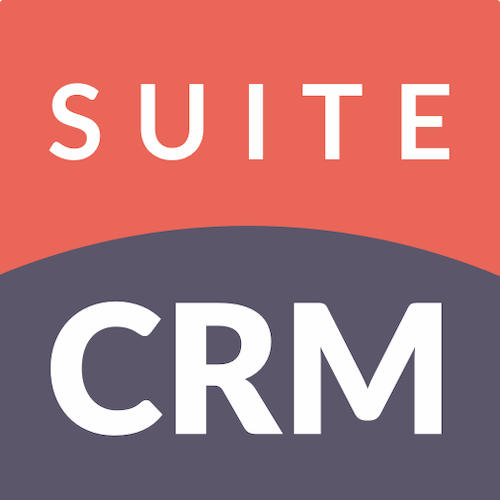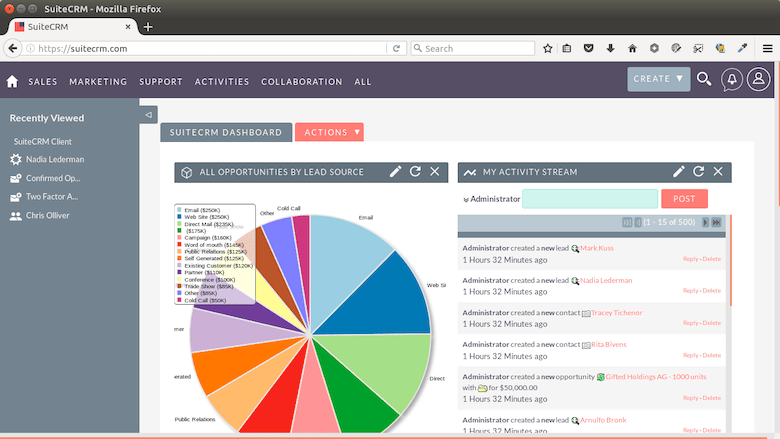
In this tutorial, we will show you how to install SuiteCRM on Debian 11. For those of you who didn’t know, SuiteCRM is an open-source alternative to the popular customer relationship management (CRM) software, SugarCRM. It is a fully-featured and highly extensible CRM application that runs on any operating system. It became popular when SugarCRM decided to stop the development of its community edition. It is used for creating business strategies, actions, and decisions.
This article assumes you have at least basic knowledge of Linux, know how to use the shell, and most importantly, you host your site on your own VPS. The installation is quite simple and assumes you are running in the root account, if not you may need to add ‘sudo‘ to the commands to get root privileges. I will show you the step-by-step installation of SuiteCRM on a Debian 11 (Bullseye).
Prerequisites
- A server running one of the following operating systems: Debian 11.
- It’s recommended that you use a fresh OS install to prevent any potential issues.
- SSH access to the server (or just open Terminal if you’re on a desktop).
- An active internet connection.
- A
non-root sudo useror access to theroot user. We recommend acting as anon-root sudo user, however, as you can harm your system if you’re not careful when acting as the root.
Install SuiteCRM on Debian 11 Bullseye
Step 1. Before we install any software, it’s important to make sure your system is up to date by running the following apt commands in the terminal:
sudo apt update sudo apt upgrade
Step 2. Installing the LAMP stack.
A Debian 11 LAMP server is required. If you do not have LAMP installed, Please read our previous tutorial to install LAMP Server on Debian 11.
Step 3. Installing SuiteCRM on Debian 11.
By default, SuiteCRM is not available on the Debian 11 base repository. So, now we download the latest stable version of SuiteCRM from the official page:
wget https://suitecrm.com/files/147/SuiteCRM-7.12/578/SuiteCRM-7.12.1.zip
Next, extract the downloaded file, using the below command:
unzip SuiteCRM-7.12.1.zip
After that, move the extracted directory to the Apache default root directory:
mv SuiteCRM-7.12.1 /var/www/html/suitecrm
We will need to change some folder permissions:
chown -R www-data:www-data /var/www/html/suitecrm chmod -R 755 /var/www/html/suitecrm
Step 4. Configuring MariaDB.
By default, MariaDB is not hardened. You can secure MariaDB using the mysql_secure_installation script. You should read each step carefully which will set the root password, remove anonymous users, disallow remote root login, and remove the test database and access to secure MariaDB:
mysql_secure_installation
Configure it like this:
- Set root password? [Y/n] y - Remove anonymous users? [Y/n] y - Disallow root login remotely? [Y/n] y - Remove test database and access to it? [Y/n] y - Reload privilege tables now? [Y/n] y
Next, we will need to log in to the MariaDB console and create a database for SuiteCRM. Run the following command:
mysql -u root -p
This will prompt you for a password, so enter your MariaDB root password and hit Enter. Once you are logged in to your database server, you need to create a database for SuiteCRM installation:
MariaDB [(none)]> CREATE DATABASE suitecrm_db; MariaDB [(none)]> CREATE USER 'suitecrm_user'@'localhost' IDENTIFIED BY 'your-strong-password'; MariaDB [(none)]> GRANT ALL PRIVILEGES ON suitecrm_db.* to suitecrm_user@'localhost'; MariaDB [(none)]> FLUSH PRIVILEGES; MariaDB [(none)]> exit
Step 5. Configuring Apache.
Now we create an Apache virtual host configuration file with the following command below:
nano /etc/apache2/sites-available/suitecrm.conf
Add the following lines:
<VirtualHost *:80>
DocumentRoot /var/www/html/suitecrm
ServerName suitecrm.your-domian.com
<Directory /var/www/html/suitecrm>
Options FollowSymLinks
AllowOverride All
</Directory>
ErrorLog /var/log/apache2/suitecrm-error.log
CustomLog /var/log/apache2/suitecrm-access.log common
</VirtualHost>
Save and close, then restart the Apache webserver so that the changes take place:
sudo a2ensite suitecrm.conf sudo a2enmod rewrite sudo systemctl reload apache2
Step 6. Secure SuiteCRM with Let’s Encrypt SSL.
First, install Certbot to your Debian system using the following command below:
sudo apt install certbot python3-certbot-apache
Then, generate the certificates, with the following command:
certbot --apache -d suitecrm.your-domian.com
You will then be prompted to enter an email address for the certificate. After you have entered that you must agree to the T&C’s and decide if you want to share your email address with the Electronic Frontier Foundation. This last step is optional. Once successfully, Reload Apache again to load all the new configurations.
Step 7. Accessing SuiteCRM Web Interface.
Once successfully installed, open your web browser and type the URL http://suitecrm.your-domain.com to access the SuiteCRM web UI. You should see the following screen:

Congratulations! You have successfully installed SuiteCRM. Thanks for using this tutorial for installing the latest version of SuiteCRM on Debian 11 Bullseye. For additional help or useful information, we recommend you check the official SuiteCRM website.